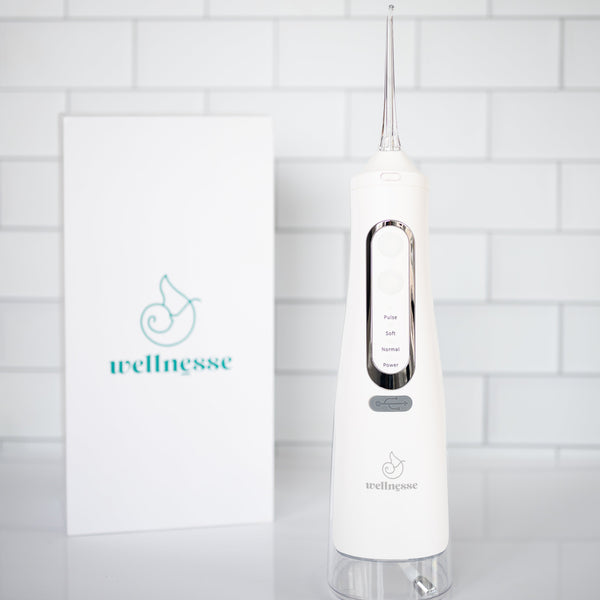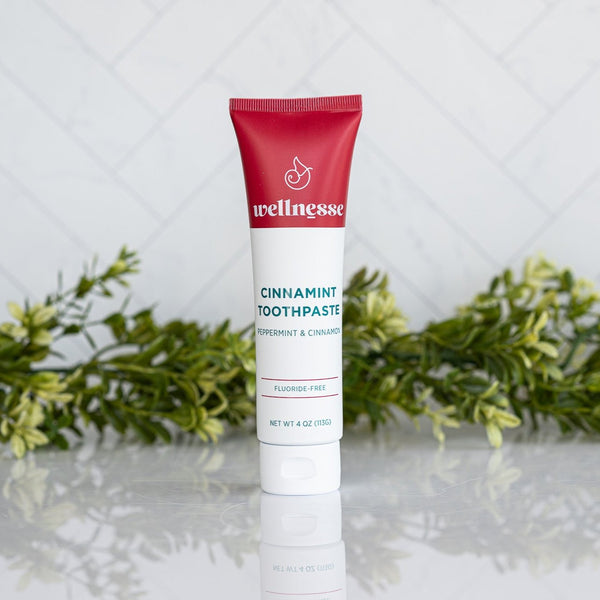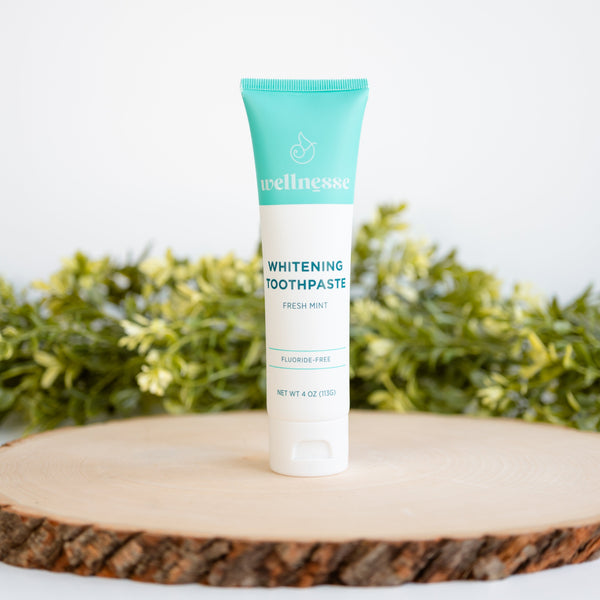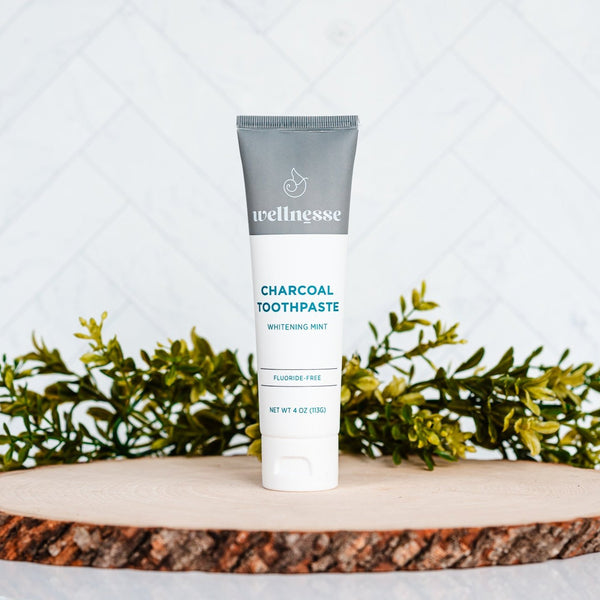No one wants smelly armpits, so it’s no surprise that deodorant is a regular part of our daily routines. Few of us would venture out for the day without the protective power of a few swipes of our favorite deodorant.
Since it is such an integral part of our lives, we may spend less time than we should thinking about the ingredients in our deodorants. We need to keep fresh and clean, and if it gets the job done, well…
But as you can probably guess, disregarding the ingredients in your deodorant is a bad idea. While conventional deodorants may be effective in reducing sweat and blocking body odor, most contain toxic chemicals that harm your skin and overall health.
Fortunately, as more people decide to take ownership of their health and eliminate toxins from their personal care routines, safer and cleaner products are appearing on the market.
So far, the best alternative to conventional deodorant and antiperspirant comes in the form of mineral deodorant. Free from the harmful chemicals that can irritate our skin and disrupt our body’s systems, these deodorants use mineral salts to eliminate odor-causing bacteria while allowing the body to sweat (a normal, healthy process) instead of blocking the pores with toxins.
Are you looking to upgrade your deodorant game? Our Mineral Deodorant is powerful, aluminum-free, and formulated for men and women!
What Are Mineral Deodorants Made From?
Many mineral deodorants contain a natural mineral salt called potassium alum (the longer chemical name is potassium aluminum sulfate). This form of natural deodorant is often called crystal deodorant or rock deodorant. Potassium alum is naturally antimicrobial, which means it helps to eliminate the bacteria responsible for body odor.
Other natural deodorizers include magnesium - another naturally antibacterial mineral salt - and sodium bicarbonate, better known as baking soda.
Do Mineral Deodorants Work?
To understand exactly how mineral deodorants work to eliminate body odor and keep us smelling fresh all day, we must understand what causes odor in the first place.
We all know that getting sweaty is a surefire way to increase our body odor. (Hello, sports, workouts, and any summer activity!) However, many people don’t know that sweat itself doesn’t stink.
Rather, body odor results from our sweat mixing with and reacting to the bacteria on our skin.
Armpit odor tends to be the most noticeable because we have two different types of sweat glands. Most of our body is covered in eccrine glands, but some areas (such as our armpits and groins) have apocrine glands instead.
Both types of glands release sweat to protect our bodies against overheating. However, the sweat released by our apocrine glands is more potent than the sweat produced by our eccrine glands. When sweat from the apocrine glands encounters certain bacteria that inhabit our skin, it creates the distinctive smell we associate with body odor.
Many conventional deodorants double as antiperspirants, which make them more appealing to the public. Who wouldn’t want to sweat less? However, these antiperspirants typically contain aluminum, which works by blocking the pores to stop sweat production. Not sweating may sound like a dream come true, but it actually leads to a dangerous buildup of toxins in your skin.
Mineral deodorants, on the other hand, don’t act as or claim to be antiperspirants. They won’t stop you from sweating. (Remember: Sweating can be unpleasant, but it’s good.) Instead of utilizing chemicals to plug the sweat glands or harsh fragrances to ‘freshen,’ mineral deodorant targets odor-causing bacteria to eliminate body odor without interfering with the body’s natural processes.
How Do You Use Mineral Deodorants?
Mineral deodorants come in many different forms. Those that use potassium alum to fight odor are available as crystals or rocks, which must be dampened before being rolled over the underarms. They can be purchased as a roll-on or as a spray.
Deodorants that rely on sodium bicarbonate (baking soda) usually include moisturizing ingredients like shea butter, coconut oil, or aloe. As a result, these are available as roll-ons and creams (since they’re too thick to spray).
You can apply mineral deodorant like any conventional deodorant: shower, swipe onto clean skin, and be on your way! You can reapply as needed, but the right mineral deodorant will last all day. (Remember that any deodorant’s effectiveness will vary based on your activity levels and propensity to sweat.)
It’s very important to note that when switching from conventional to clean deodorant, most people experience a ‘transition’ period in which their bodies slowly adapt to the change. Around here, we call this ‘detoxing.’
If you currently or used to use antiperspirants regularly, it’s probably been years since your body has been able to sweat as it naturally would. When you cut out antiperspirants, it can take a little while for your body to rebalance and expel years’ worth of aluminum and toxin buildup. You may notice increased sweating and/or odor during this time. That’s perfectly normal!
The transition typically lasts two to four weeks, but you can speed up the process by doing an armpit detox. Apply the mixture to your armpits, allow it to sit for 5-20 minutes, and then rinse.
While feeling like a sweaty mess sounds pretty undesirable, it’s more than worth it to expel all the built-up toxins from your system. Once the detox period is over, your body should find its balance again. You may even find you don’t need to apply deodorant as frequently as before!
Are Mineral Deodorants Safe?
If your conventional deodorant has been doing the trick all these years (at least in terms of odor protection), why should you go through the effort of transitioning to a natural alternative?
The reason is simple: Most deodorants and antiperspirants contain chemicals linked with serious health conditions. When applied to our armpits, these chemicals are absorbed into our bodies and may disrupt our endocrine systems, which are responsible for regulating our hormones.
Some of the most common and potentially harmful deodorant ingredients include:
- Propylene Glycerol: A chemical often found in antifreeze, propylene glycerol is a skin irritant and a potential allergen, according to the Environmental Working Group.
- Parabens: These preservative agents are endocrine disruptors commonly found in many personal care products. Breast Cancer Prevention Partners say they may increase the risk of developing breast cancer.
- Phthalates: Another well-known group of endocrine disruptors, phthalates are used as solvents in cosmetics and personal care products.
- Artificial fragrances: These chemical additives are frequently linked to skin irritation and allergies. Many chemicals used to create deodorant scents aren’t required to be listed on ingredient labels!
As we mentioned earlier, antiperspirants also use aluminum to block our pores and reduce the amount we sweat. This controversial ingredient has been central to heated debate for many years.
Although the National Cancer Institute denies the existence of a strong, proven link between aluminum in antiperspirants and cancer, some studies have found a correlation between the two. Meanwhile, the Environmental Working Group lists aluminum as a neurotoxin and allergen that can easily be absorbed through the skin.
These numerous known (and unknown) health risks have led many of us to seek safer, cleaner alternatives to antiperspirants and conventional deodorants. Even if some of these suspicions have yet to be proven, is it worth the risk? We don’t think so.
Mineral deodorants are usually free from these threats, as cleaner brands replace chemicals with natural ingredients that don’t trigger allergies, cause irritation, or disrupt our hormones. However, you should always read your labels to see exactly what each product uses.
Crystal deodorants still contain aluminum salts in the form of potassium alum or ammonium alum. While these are considered safer alternatives to the aluminum chlorohydrate contained in conventional antiperspirants, those wanting to avoid aluminum altogether might prefer a deodorant with a magnesium or baking soda base instead.
Aluminum and toxins aside, mineral deodorants have one major benefit over antiperspirants: They don’t interfere with sweating.
This might not sound positive at first, but remember, our bodies need to sweat. It is a natural part of how we regulate our temperatures. Blocking up the sweat glands interrupts their healthy, biological process, which is never a smart move when trying to rebalance your body.
It can be frustrating and even a little uncomfortable initially, especially if you are used to applying antiperspirants daily. But it just takes some getting used to! Some mineral formulas - like ours! - contain ingredients that help to absorb sweat. These stop you from feeling wet under the arms without disrupting your natural sweat production.
Some people - especially those with sensitive skin - find that baking soda irritates them. This is partly due to the slightly harsh nature of the ingredient but also the concentration in which it is used. If you find this is the case for you, you’ll want to look for a brand that uses only a minimal amount of baking soda.
Our deodorant contains the lowest concentration of baking soda possible to keep the odor-fighting power while avoiding skin irritation. Many of our customers have baking soda sensitivities and love our formula!
Free from aluminum, synthetic fragrances, parabens, or phthalates, mineral deodorant can be an excellent alternative to the toxic, synthetic formulas we find on the market today. With powerhouse ingredients like shea butter and coconut oil, our formula fights bacteria, eliminates odor, and moisturizes the skin all at once!
Make the Switch
If you want to cut the chemicals while still sticking to products that work, ditching your antiperspirant and choosing a gentle, effective mineral deodorant is a great first step. There’s no need to choose between health and freshness!
At Wellnesse, we understand how important it is to find safe, effective, and toxin-free personal care products for you and your family. That’s why our Mineral Deodorant stick is made from natural ingredients and is 100% aluminum-free. We swapped the toxins, chemicals, and fragrances for tapioca starch (to absorb sweat), shea butter (to moisturize the skin), and just a pinch of deodorizing baking soda.
With a subtle scent of aloe and driftwood, our deodorant is perfect for both men and women and will keep you feeling and smelling fresh all day long, safe in the knowledge that our formula is as good for your health as it is for your armpits.
Resources
Watson, S. (2021) What's that smell? Get rid of body odor: Harvard Health Publishing, retrieved May 01, 2022 from https://www.health.harvard.edu/staying-healthy/whats-that-smell-common-and-less-common-causes-of-body-odor
Wells, K. (2019) How to Detox Your Armpits: Wellness Mama, retrieved May 01, 2022 from https://wellnessmama.com/remedies/detox-your-armpits/
Propylene Glycol: The Environmental Working Group, retrieved May 01, 2022 from https://www.ewg.org/skindeep/ingredients/705315-propylene_glycol/
Andersen, F. A. (2008). Final amended report on the safety assessment of methylparaben, ethylparaben, propylparaben, isopropylparaben, butylparaben, isobutylparaben, and benzylparaben as used in cosmetic products. International journal of toxicology, 27, 1-82. https://doi.org/10.1177/109158180802704s01
Parabens: Breast Cancer Prevention Partners, retrieved May 01, 2022 from https://www.bcpp.org/resource/parabens/
Chemical Callout - Phthalates: Made Safe, retrieved May 01, 2022 from https://www.madesafe.org/?s=phthalates
Fragrances in Cosmetics: FDA, retrieved May 01, 2022 from https://www.fda.gov/cosmetics/cosmetic-ingredients/fragrances-cosmetics
Wells, K. (2021) Is Aluminum Safe to Use?: Wellness Mama, retrieved May 01, 2022 from
https://wellnessmama.com/health/aluminum-safe/
Antiperspirants/Deodorants and Breast Cancer: National Cancer Institute, retrieved May 01, 2022 from https://www.cancer.gov/about-cancer/causes-prevention/risk/myths/antiperspirants-fact-sheet
McGrath K. G. (2003). An earlier age of breast cancer diagnosis related to more frequent use of antiperspirants/deodorants and underarm shaving. European journal of cancer prevention : the official journal of the European Cancer Prevention Organisation (ECP), 12(6), 479–485. https://doi.org/10.1097/00008469-200312000-00006
Aluminum Powder: the Environmental Working Group, retrieved May 01, 2022 from https://www.ewg.org/skindeep/ingredients/700324-ALUMINUM_POWDER/








